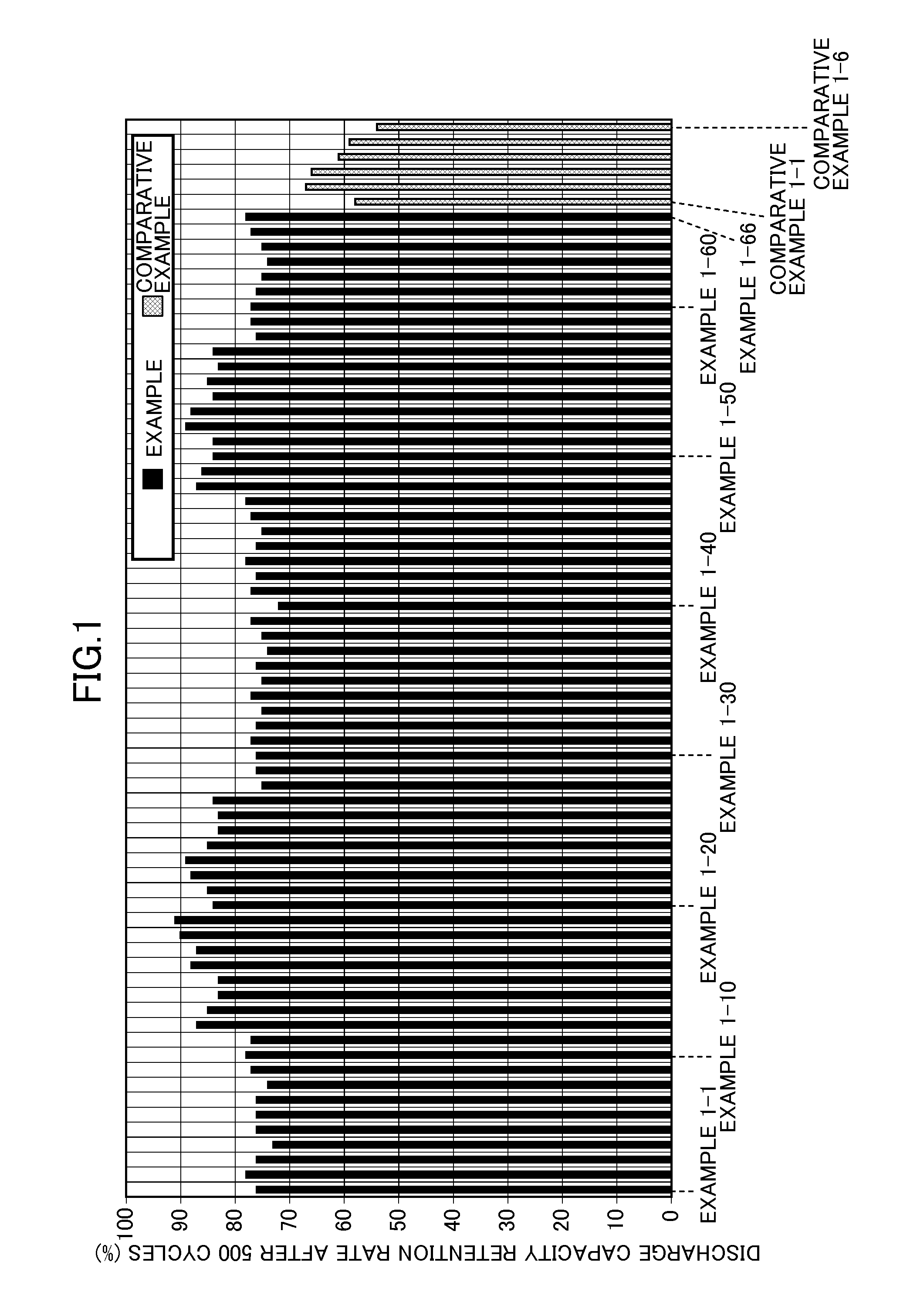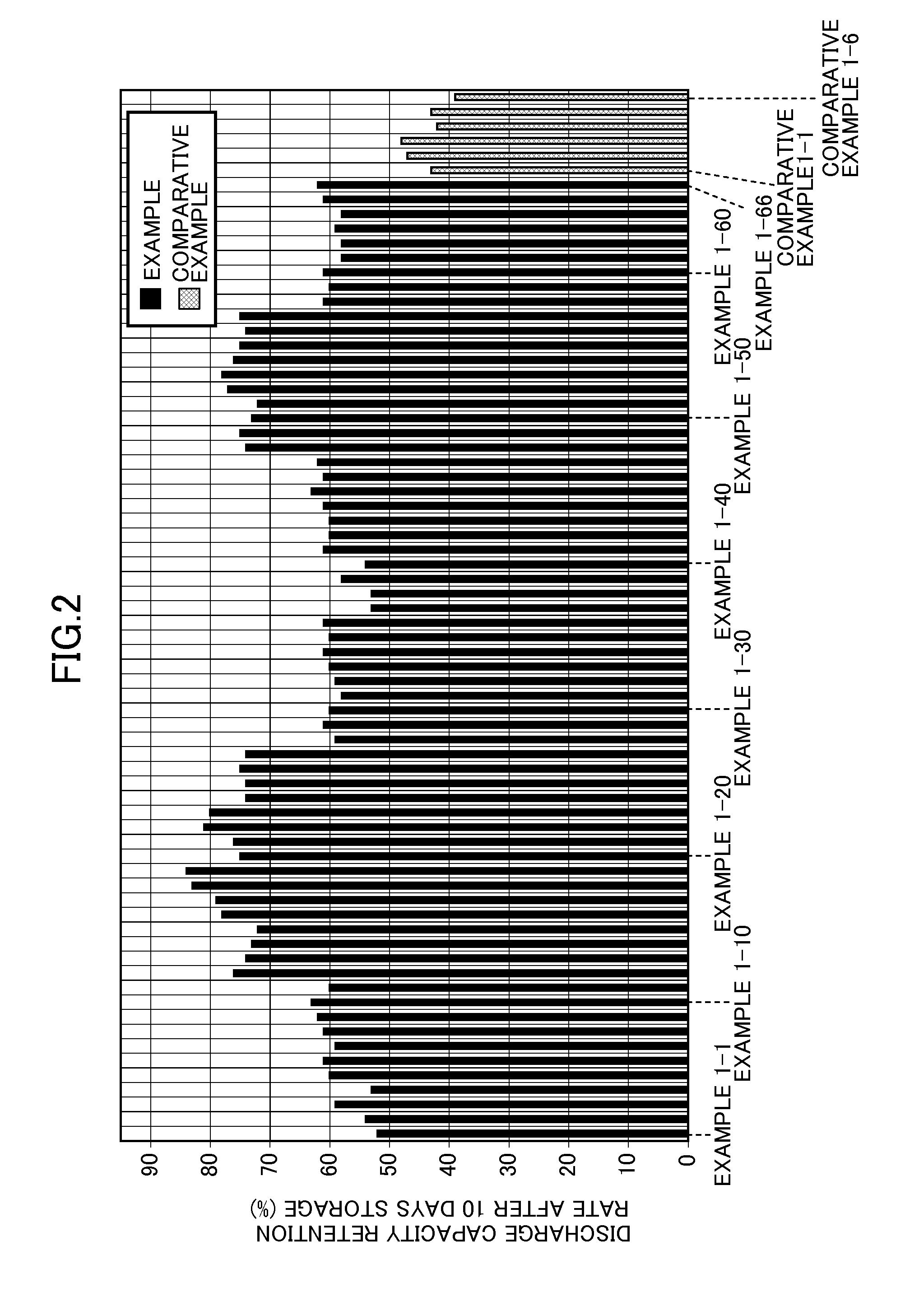Electrolytic Solution for Nonaqueous Electrolyte Batteries and Nonaqueous Electrolyte Battery Using the Same
a technology of electrolyte battery and electrolyte battery, which is applied in the direction of non-aqueous electrolyte cells, electrochemical generators, transportation and packaging, etc., can solve the problems of unsatisfactory durability in many uses, corrosion of battery can materials, and difficulty in discharge, so as to achieve excellent cycle characteristics and high-temperature storage characteristics, and less amount of free fluorine ions
- Summary
- Abstract
- Description
- Claims
- Application Information
AI Technical Summary
Benefits of technology
Problems solved by technology
Method used
Image
Examples
example 1-1
[0048]Using a mixed solvent of ethylene carbonate with ethyl methyl carbonate at a volume ratio of 1:2 as a nonaqueous solvent, LiPF6 was dissolved as a solute in the nonaqueous solvent, to give a solution with a concentration of 1.0 mol / L of the solute. Hydrogen fluoride was added to the electrolytic solution wherein the fluorine ion concentration thereof had been controlled to 5 mass ppm by passing the solution through a column filled with an ion-exchange resin, so as to control the concentration of fluorine ions to 30 mass ppm. By the process described above, a solution containing 200 mass ppm or less of free fluorine ions and a fluorine-containing lithium salt as a solute in a nonaqueous solvent was prepared. Hereinafter, a solution having a fluorine ion concentration controlled as described above, i.e., a solution before a reduction in a fluorine ion concentration by an oxalato salt, may be referred to as “initial solution”.
[0049]Subsequently, an oxalato salt, Li3Fe(C2O4)3, was...
examples 1-2 to 1-10
[0053]The concentration of fluorine ions was reduced as in Example 1-1 except that the concentration of fluorine ions in the initial solution and the molar ratio of fluorine ions in the initial solution to Li3Fe(C2O4)3 added to the initial solution were changed as shown in Table 1. Table 1 shows the filterability of the solution after the reduction in concentration of fluorine ions and the concentrations of Li3FeF6, Li3Fe(C2O4)3, and fluorine ions in the resulting electrolytic solution for a nonaqueous electrolyte battery. The evaluation results of the cycle characteristics and high-temperature storage characteristics of each battery including the electrolytic solution for a nonaqueous electrolyte battery are shown in Table 2 and FIGS. 1 and 2.
example 1-11
[0054]The same procedure as in Example 1-7 was performed except that the solution after the reduction in concentration of fluorine ions was not filtered. Since the amount of generated Li3FeF6 was small, the cycle characteristics and high-temperature storage characteristics of the battery were comparable to those in Example 1-7 involving the filtration of the material. The results are shown in Tables 1 and 2 and FIGS. 1 and 2.
PUM
 Login to View More
Login to View More Abstract
Description
Claims
Application Information
 Login to View More
Login to View More - R&D
- Intellectual Property
- Life Sciences
- Materials
- Tech Scout
- Unparalleled Data Quality
- Higher Quality Content
- 60% Fewer Hallucinations
Browse by: Latest US Patents, China's latest patents, Technical Efficacy Thesaurus, Application Domain, Technology Topic, Popular Technical Reports.
© 2025 PatSnap. All rights reserved.Legal|Privacy policy|Modern Slavery Act Transparency Statement|Sitemap|About US| Contact US: help@patsnap.com



